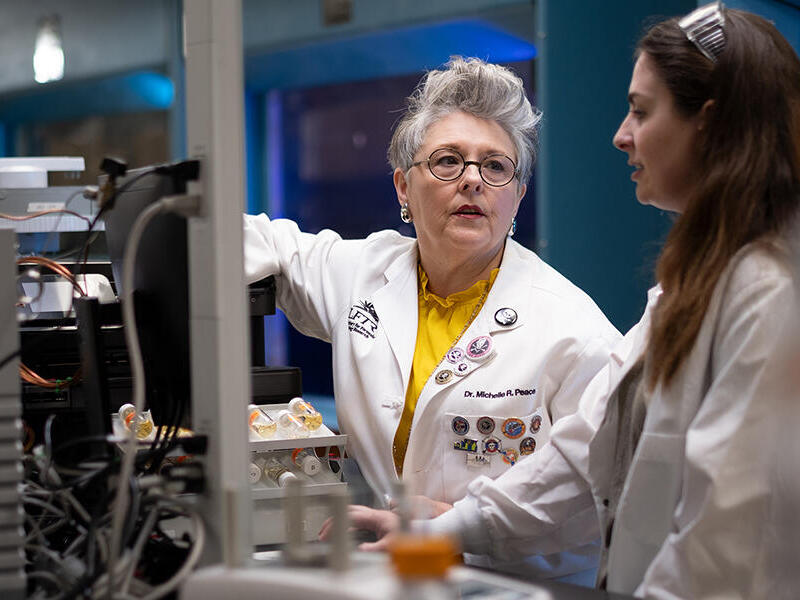May 29, 2003
New procedure at VCU offers faster, less invasive screening for colorectal polyps
Share this story
RICHMOND, Va. – Doctors at the Virginia Commonwealth University Medical Center can now use animated computer images rather than internal scopes to screen patients for colorectal polyps. The technique, called virtual colonography, uses a computer program to transform a standard computed tomography (CT) scan of the colon into a three-dimensional, high-resolution image that doctors can “fly through” on a computer screen. The VCU Medical Center has been studying the technique for the past two years.
Unlike a colonoscopy, the current gold standard for screening for colorectal polyps, a virtual colonography does not require inserting a tube and camera into the colon – something that keeps many people away from the exam table.
“For a screening test to work, it has to be easy for patients – otherwise they may not use it,” said Mary Turner, M.D., director of gastrointestinal radiology at VCU. “Virtual colonography is less invasive, takes only minutes to perform and does not require sedation, so patients can return to work the same day.”
Turner and other physicians have been working for several years to develop alternative means of detecting colorectal polyps. Polyps are small growths of tissue that can develop on the walls of the colon, or large intestine. While most polyps are benign, larger polyps, if left untreated, can become cancerous. Typically, polyps that are seven millimeters – slightly smaller than a pencil eraser – or greater need to be biopsied or removed.
During the virtual colonography procedure, the patient lies on a table and a small amount of air is used to partially inflate the colon to enhance the clarity of the images. Two 10-second CT scans are performed to capture segmental pictures of the colon. Within five minutes, the examination is complete. Using special computer software, the CT scan is converted into a 3D image of the colon that the radiologist can inspect for polyps. If suspicious polyps are found a traditional colonoscopy can be performed to biopsy or remove the growth.
“Colon cancer is very preventable if larger polyps are removed early on. Unfortunately, less than 40 percent of patients who should come in for screening actually do it,” Turner said.
Another advantage of virtual colonography is that it enables doctors to “see” the entire colon – something a standard colonoscopy cannot do in many cases because the tight twists and turns in the large intestine make navigating the colonoscope difficult. Also, since the “virtual” technique is non-invasive, there is no risk of accidentally perforating the colon.
VCU is currently participating in a National Institutes of Health (NIH) funded, two-year clinical trial comparing the effectiveness of virtual colonography screening to other techniques. Results from a previous clinical trial completed last spring showed the accuracy of virtual colonography and standard colonoscopy were similar in detecting polyps that were six millimeters or greater in size.
According to the American Cancer Society, colorectal cancer is second only to lung cancer as the leading cause of cancer-related deaths. It is estimated that doctors will diagnose 147,000 new cases of colorectal cancer this year and some 57,000 people will die from the disease. Doctors recommend regular colorectal screenings beginning at age 50. Patients with a family history of cancer, or a personal history of colorectal cancer or polyps, or inflammatory bowel disease should be screened more frequently.
Subscribe to VCU News
Subscribe to VCU News at newsletter.vcu.edu and receive a selection of stories, videos, photos, news clips and event listings in your inbox.









